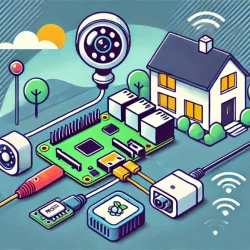OLED Lighting Enters the Mainstream

A variety of light switches can be used with OLED technology
Image attributed to Wikimedia Xferreca
Organic LED (OLED) technology is already relatively common, with smartphone displays and now even HDTVs taking advantage of it in order to dramatically improve energy efficiency and gain other benefits such as enhanced contrast ratios and colour pallets.
The Telegraph reports that the ecological benefits of OLEDs, which require less power than traditional lighting solutions, could soon appear in the mainstream market.
Artistic Impact
A recent exhibit at the 2013 Basel Art Fair showcased a work from artist Dominic Harris which uses OLED lighting in the formation of an intriguing chandelier.
Although the work is able to produce a significant amount of light, it consumes just 30 watts of electricity.
OLEDs can produce 45 lumens of brightness per watt, which is much more efficient than the 10 lumens per watt that is generated by traditional bulbs.
Eventually, it is hoped that OLEDs will be cheap enough to be widely available both to commercial ventures and consumers. Compatibility with a variety of light switches will make it easy to control this type of solution and should enable users to integrate this technology with legacy lighting set-ups and still feel the benefits.
Real-World Applications
The first commercially available OLED floor lamps are beginning to trickle on to the market, although the pricing is still relatively steep, with many models costing the equivalent of £2000 or more.
Harris's work has a price tag of £20,000, although this reflects its value as a piece of art, not as a functional product. He said that lower-cost OLED lighting will be emerging in the coming years and believes that it will follow in the footsteps of LED lighting, becoming prevalent within a decade.
The adoption of standard LED lighting has increased as prices have fallen, with bulbs that match up to the performance of 60-watt tungsten now selling for a little over £10, which is a third of their 2011 price point.
The good news about the emergence of LED and OLED technologies in the lighting industry is that they address many of the issues that some consumers have with other energy-efficient bulbs.
The light generated by an LED is bright, powerful and does not have to go through the same gradual warm-up process.
Philips' spokesperson Dietmar Thomas said that working out the cost of using OLEDs to light homes and businesses is important in calculating when this will become a truly widespread technology. He believes that it could cost as little as £850 per square foot in 2014, which is down from the £5000+ it costs at the moment.
Dramatic price reductions combined with the potential for significant savings on energy bills after adoption are helping to give OLEDs a profile boost, making them more viable.
A study conducted by an Oxford college found that the use of OLEDs might allow British households to reduce their energy usage by 80%. And because OLED technology can be integrated into almost any surface, entire walls might soon be coated in it.
This is an exciting prospect not only for the environmentally conscious, but also those who keep their eye on aesthetics.
More to Read:
Previous Posts:




